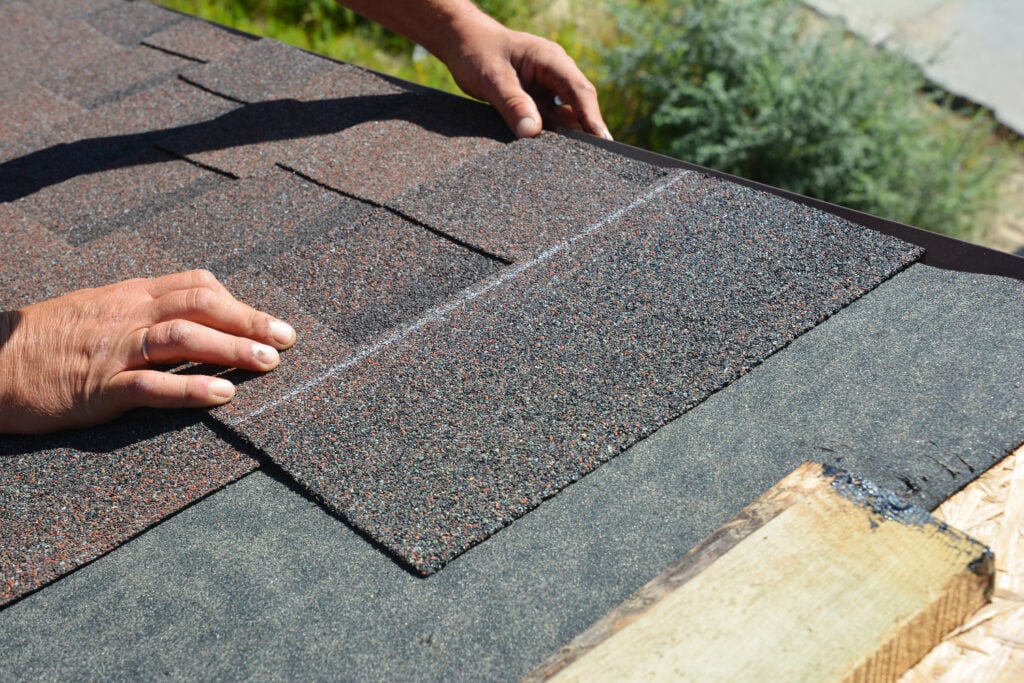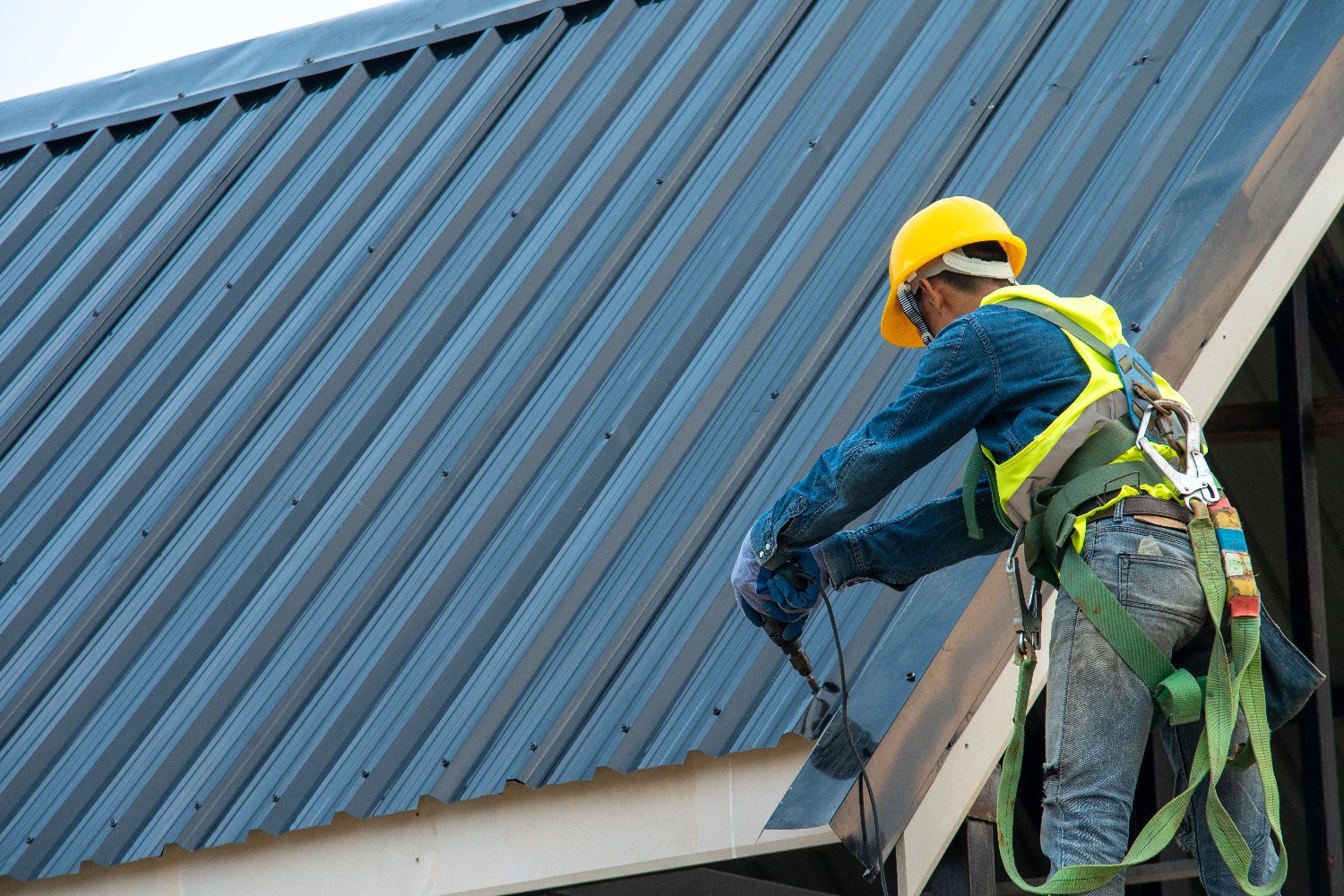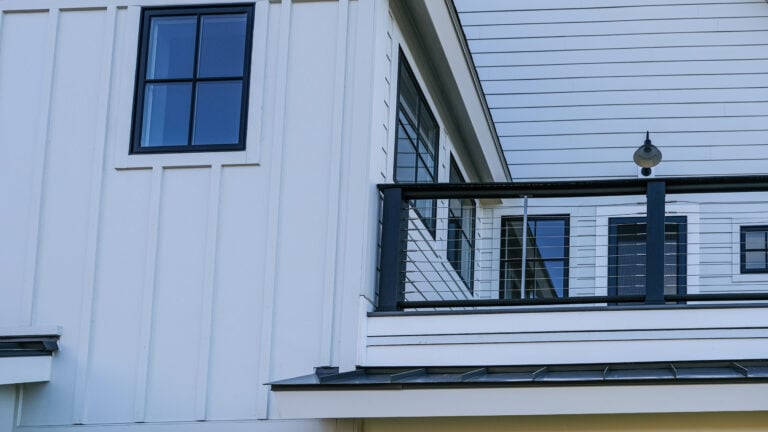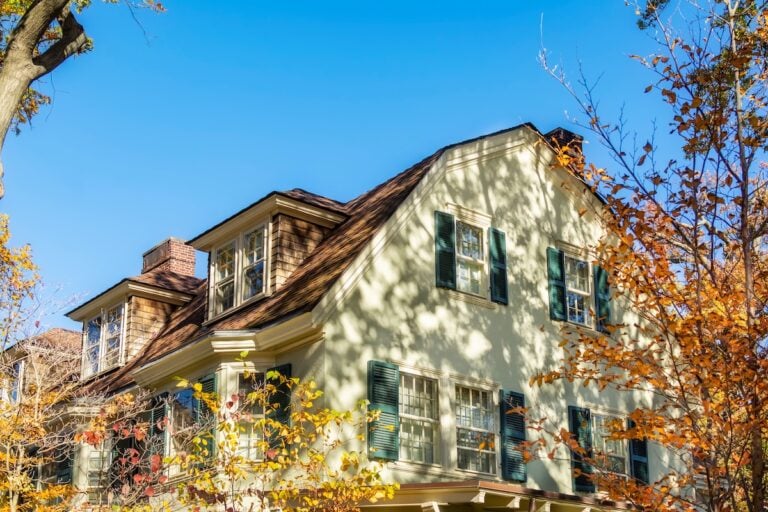When comparing metal roof vs shingles cost, the initial price and long-term investment are crucial considerations. This article directly compares both, factoring in the purchase price, installation costs, and the financial implications of durability and maintenance over time. Get ready to understand which roofing option may be more economical for your specific situation, based on plain facts, to guide your roofing decision with confidence.
Inside this blog:
- Initial Cost Analysis: Metal Roof vs Asphalt Shingles
- Longevity and Lifetime Value Comparison
- Energy Efficiency and Utility Savings
Initial Cost Analysis: Metal Roof vs Asphalt Shingles
Choosing a roofing material for a significant home improvement project involves considering various factors, one of the key ones being cost. It’s no secret that metal roofs generally cost more per square foot than their asphalt shingle counterparts. According to industry estimates, the overall expense of a metal roof can be two to three times that of an asphalt shingle roof.
When considering a new roof, it’s important to factor in the metal roof cost, which can be higher than that of a standard shingle roof. Metal roofing panels, priced between $4 to $30 per square foot, primarily contribute to this higher cost, leading to a total cost that can range from $8,500 to $68,000 for an average-sized roof.
In contrast, a standard shingle roof can cost between $3.50 and $5.50 per square foot, averaging a total cost of around $8,500 for a 1,700-square-foot roof. Yet, while asphalt shingle roofs offer a lower upfront expense, they may incur additional costs over time due to repairs and a shorter lifespan.
Installation Expenses
Another considerable element in the overall roof replacement cost is the installation expense. Installing a metal roof is more complex and labor-intensive than installing asphalt shingles, which is reflected in the labor costs. Labor costs for metal roofing are typically $3–$5 per square foot. For a 1,700-square-foot roof, this equates to a range between $3,400 and $23,800 total.
Installation costs can also rise due to complexities such as:
- odd roof shapes
- unique cuts needed
- steeper slopes
- access difficulties
Moreover, metal roof installation carries the higher end of the labor cost range due to the complexity and duration of the job, contrasting with shingle roofs that typically require less expertise and therefore cost $2–$3 per square foot in labor.
Longevity and Lifetime Value Comparison
Although the upfront costs for metal roofs might appear higher, the roof’s lifetime value should not be overlooked. When it comes to durability and longevity, metal roofs significantly outlast asphalt shingles. In fact, a well-maintained metal roof can last up to 80 years, while asphalt shingles typically last between 15 to 30 years.
This higher lifespan is due to metal roofs’ resistance to damage from freeze-thaw cycles, fire, pests, or moisture-related issues, such as mold and mildew. Over the long term, metal roofs can be more cost-effective due to their durability, lesser need for maintenance, and longer lifespan compared to asphalt shingles.
Moreover, metal roofs often contribute to a higher resale value of homes, making them a valuable investment over time.
Durability Over Decades
One of the major advantages of metal roofs is their superior durability. Here are some reasons why:
- Metal roofs have a lifespan of up to 50 or even 100 years, significantly surpassing the longevity of traditional roofing materials.
- They require less frequent replacements, saving you time and money.
- Metal roofs can withstand extreme weather conditions such as high winds and hail, providing enhanced protection to buildings.
In contrast, while asphalt shingles might be the more popular choice due to their lower initial cost, they tend to last between 15 to 30 years. Consequently, this shorter lifespan means that they will require replacement more frequently than metal roofs, which can lead to higher long-term costs.
Maintenance and Repair Costs
Maintenance and repair costs are another consideration when comparing the cost of metal roofs and asphalt shingles. Here again, metal roofs have the upper hand. They require less maintenance than asphalt shingles, which need more frequent repairs due to storms and general wear-and-tear.
Homeowners with metal roofs are likely to save on long-term expenses related to maintenance, due to minimal maintenance requirements such as regular inspections and keeping gutters clean. Furthermore, metal roof repairs are generally simpler than those for shingles. Therefore, choosing a metal roof over shingles offers long-term savings potential through reduced maintenance and repair costs.

Energy Efficiency and Utility Savings
Metal roofs not only offer durability and low maintenance, but they also provide substantial energy efficiency benefits. One of the most notable is their ability to reflect heat and improve insulation, which can result in lower overall energy consumption for temperature regulation. This characteristic means they can maintain cooler temperatures in summer and warmer ones in winter, potentially leading to significant savings on energy costs.
While achieving the full energy-saving potential of metal roofing requires professional installation to maximize its heat reflective characteristics, the variety of colors available, including options with reflective finishes, further boosts its energy-saving capacity. This makes a metal roof a smart choice for homeowners looking to save on energy costs and reduce their environmental footprint.
Impact on Heating and Cooling Bills
One significant advantage of metal roofs is their ability to deflect radiant heat, helping to maintain stable indoor temperatures and reduce reliance on air conditioning systems. This significant reflection of the sun’s radiant heat is associated with decreased air conditioning use, which can lower overall cooling expenses.
Asphalt shingles, on the other hand, have their own energy efficiency characteristics. Light-colored shingles offer better heat reflection and can improve energy efficiency in hot climates. On the other hand, dark-colored shingles can contribute to increased heat absorption in the summer, but may aid in melting snow and ice during winter conditions.
Understanding the Price of Roofing Materials
Whether you’re drawn to a metal roof or the classic charm of asphalt shingles, remember to consider all the factors mentioned above. In the end, the best choice is the one that fits your budget, complements your home’s aesthetic, and aligns with your values.
When you’re ready to revamp your roof, contact Best Exteriors. We’ll make sure that your roof looks good and provides adequate coverage.




